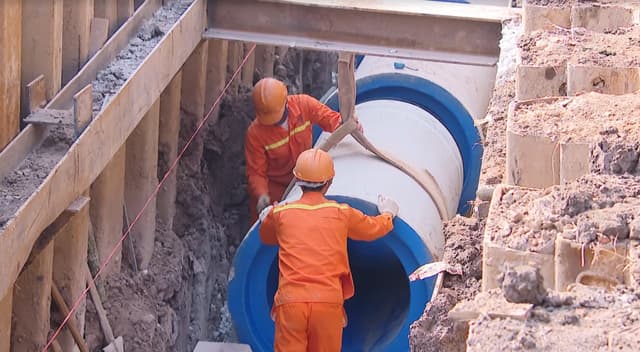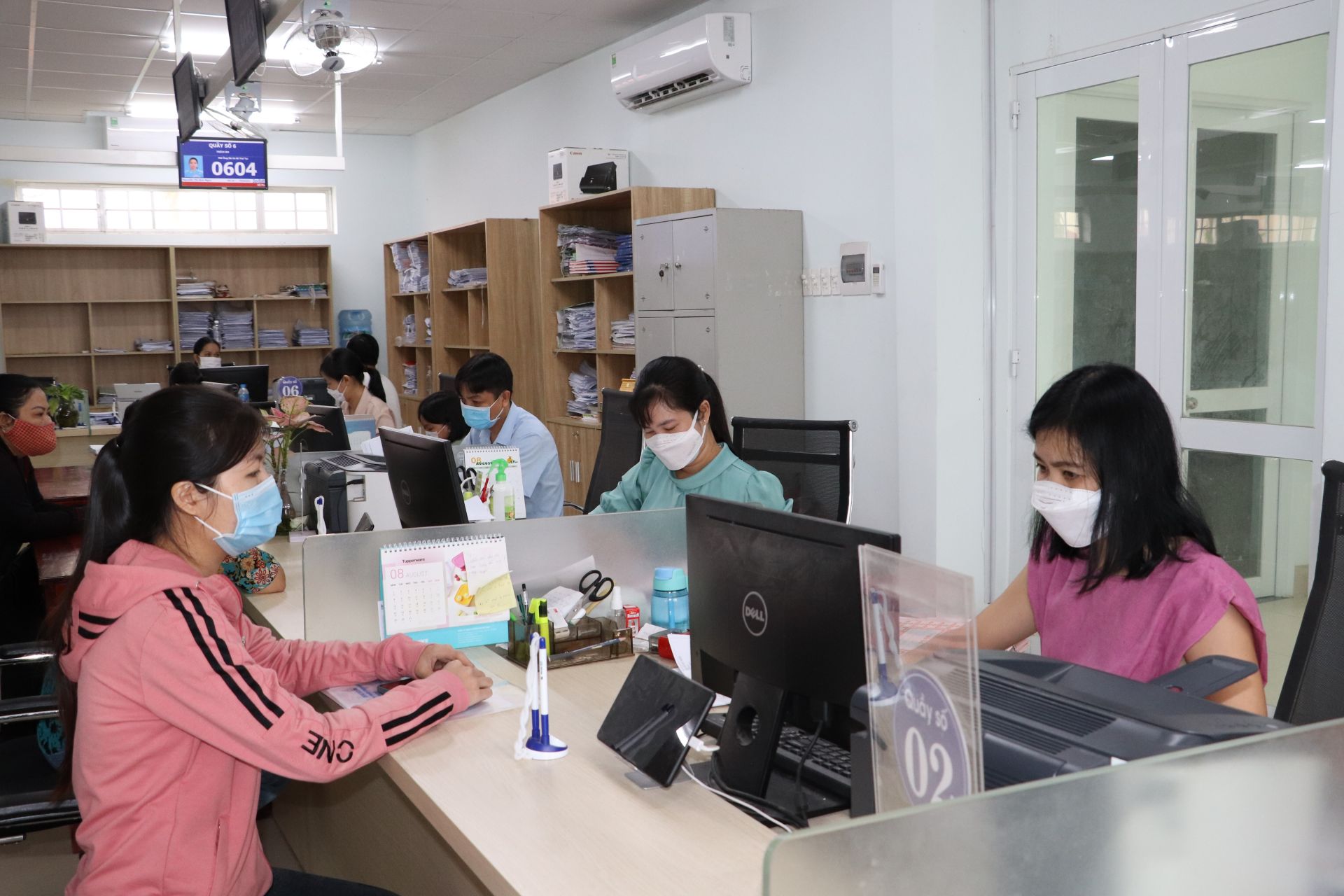Latest regulations on wastewater collection and drainage structures in Vietnam
What are the latest regulations on wastewater collection and drainage structures in Vietnam? - Minh Anh (HCMC)

Latest regulations on wastewater collection and drainage structures in Vietnam (Internet image)
Regarding this issue, LawNet would like to answer as follows:
1. Latest regulations on wastewater collection and drainage structures in Vietnam
Wastewater collection and drainage structures according to Article 5 of Circular 15/2021/TT-BXD are as follows:
- Combined sewer overflows on common water drainage system:
+ Rely on water drainage situations, geology, terrain, and hydrography characteristics to determine construction location of combined sewer overflows. Construction location of combined sewer overflows must ensure accessibility during management, operation, and supervision of the structures and convenience in discharging rainwater into receiving waters and not affect other technical infrastructures;
+ Management and operation of combined sewer overflows must comply with designed management and operational procedures approved by competent authority;
+ Combined sewer overflows must be dredged, preserved, and maintained regularly in order to guarantee normal operation.
- Collection sewers for transporting wastewater to treatment plants:
+ Location and depth of installation of collection sewers must guarantee convenience in managing operation and compliance with national technical regulations on technical infrastructures serving water drainage;
+ Diameter, velocity, and slopes of wastewater collection sewers must be calculated and examined in order to guarantee rate of wastewater collection and transport to concentrated treatment plants and prevent from leaking;
+ Collection sewers must be durable, sealed, and stable under weight, natural conditions, and corrosive effects of the environment during use period.
- Post-treatment wastewater discharge gates leading to receiving waters must be installed in appropriate areas so that wastewater can mix with receiving waters and not cause bank erosion or affect surrounding scenery, other structures and traffic activities.
- Manholes of wastewater discharge gates must be installed in appropriate locations to allow access, inspection, control of discharge sources, and water sampling when discharging into receiving waters.
- For common water drainage systems that are regulated by detention basins, rainwater must first pass combined sewer overflows prior to entering detention basins. Water storage and regulation performed by detention basins must guarantee regulation of rainwater.
2. Regulations on connection of water drainage system in Vietnam
Regulations on connection of water drainage system according to Article 6 of Circular 15/2021/TT-BXD are as follows:
- Connection of water drainage system:
+ Prior to implementing connection agreement, a drainage entity is responsible for examining drainage capacity of existing water drainage system; the construction of wastewater collection and drainage structures must not affect drainage capacity of existing areas;
+ For a discharging household located within the vicinity of common drainage system, the drainage entity must provide at least one connection point for both rainwater and wastewater. For a discharging household located within the vicinity of a separate water drainage system, the discharging entity must provide at least one connection point leading to wastewater discharge gate and at least one connection point leading to rainwater discharge gate;
+ Elevation of connection points at connectors must be lower than that of structures where discharging households are located. If connection points were already installed at the time of construction, project developers must respect the floor elevation of the existing connectors, guarantee slopes, and prevent wastewater from flowing back into structures where discharging households are located;
+ If, either by structural conditions or geography, elevation of wastewater discharge location in a structure where the discharging household is located is lower than that of the connector, the drainage entity shall instruct the household to adopt rectifying measures so that wastewater produced by the household is connected to the wastewater drainage system in a manner satisfying technical requirements;
+ Connectors must be fixed at the connection point, stable, safe, and convenient in order to allow inspection, supervision, maintenance, and leaking of wastewater.
- Requirements for connection of water drainage system:
+ In urban areas and residential areas that have separate water drainage systems and concentrated urban wastewater treatment plants, domestic wastewater of discharging households shall be directly connected to connectors. When upgrading or renovating common water drainage systems into separate water drainage systems, owners of water drainage structures must rely on current conditions and water drainage requirements of the areas where the upgrade and renovation take place to decide on retention of septic tanks;
+ Wastewater drainage gates of discharging households must be connected with connectors or other wastewater drainage structures if connectors are absent. Combined sewer overflows of discharging households must be connected to connectors for rainwater, canals, channels, or local combined sewer overflows;
+ Untreated wastewater must be connected to collection sewers of water drainage system and prevented from permeating the ground or seeping into other water sources;
+ Wastewater of manufacturing, business, service facilities in urban areas and residential areas must be preliminarily collected and treated in a manner satisfactory to regulations of urban areas or local governments prior to being connected to wastewater collection and drainage structure;
+ Treated wastewater of manufacturing, business, service facilities in urban areas and residential areas must meet environmental technical regulations or environmental protection requirements depending on types of wastewater prior to being connected to wastewater connection and drainage structure.
- Guidelines for registration and organization of legal knowledge examination on road traffic order and safety in Vietnam
- Contents of audit service quality control in Vietnam
- Acts in violation of Law on Independent Audit in Vietnam
- Tasks and solutions of the Scheme for connecting, authenticating, and standardizing the National Database on Insurance in Vietnam
- Program for the prevention and control of child accidents and injuries in Vietnam for the period of 2021 – 2030
- Guidelines on adjusting citizen information in the National Population Database in Vietnam
-

- Emergency response and search and rescue organizations ...
- 10:29, 11/09/2024
-

- Handling of the acceptance results of ministerial ...
- 09:30, 11/09/2024
-

- Guidance on unexploded ordnance investigation ...
- 18:30, 09/09/2024
-

- Sources of the National database on construction ...
- 16:37, 09/09/2024
-

- General regulations on the implementation of administrative ...
- 11:30, 09/09/2024
-

- Regulations on the environmental protection fee ...
- 08:30, 25/11/2024
-

- National Action Plan for digital economy development ...
- 08:00, 25/11/2024
-

- Responsibilities of officials of the Ministry ...
- 16:00, 23/11/2024
-

- 06 solutions to enhance the effectiveness of social ...
- 15:32, 23/11/2024
-

- Guidelines for registration and organization of ...
- 11:53, 23/11/2024

 Article table of contents
Article table of contents
